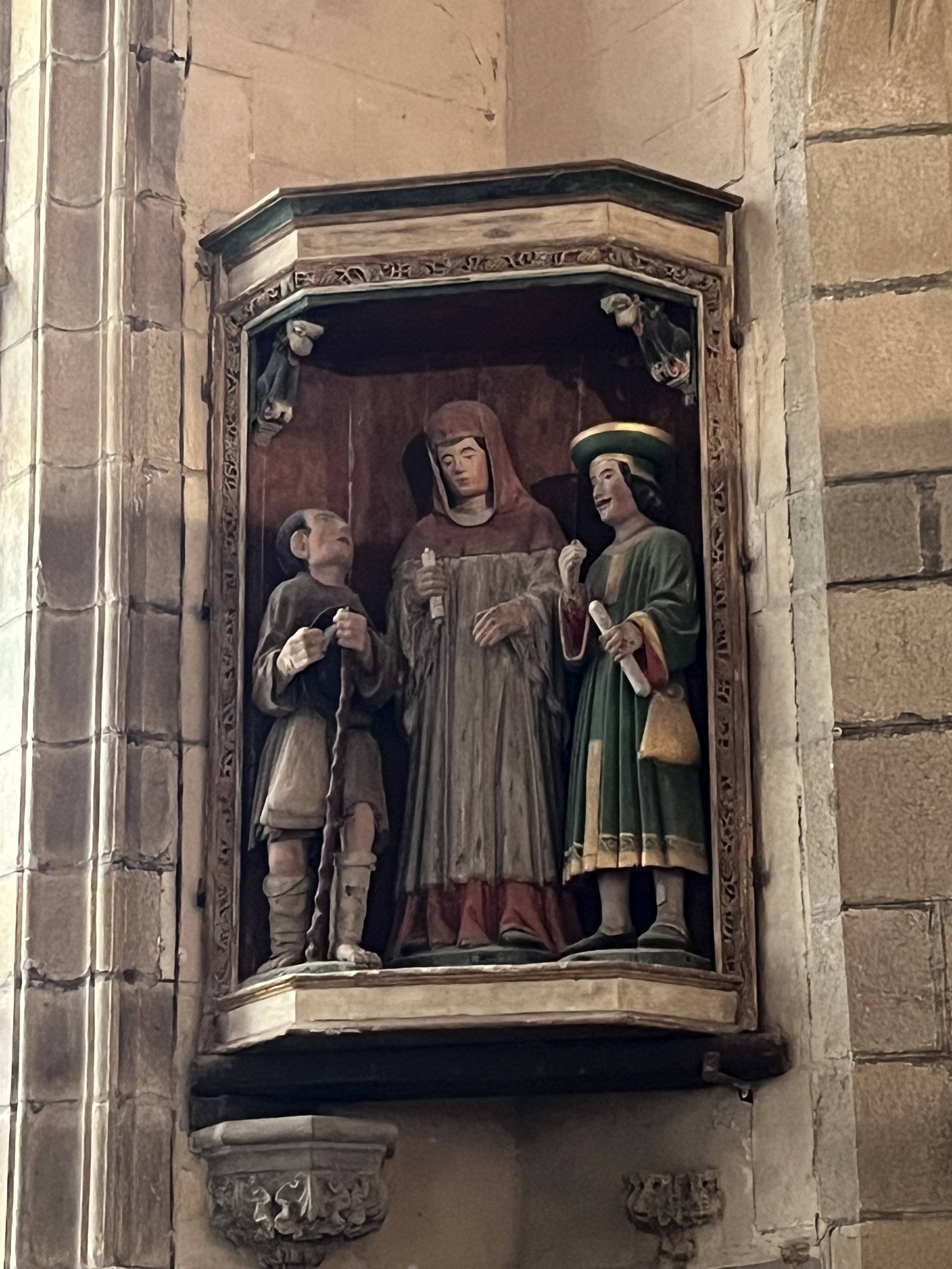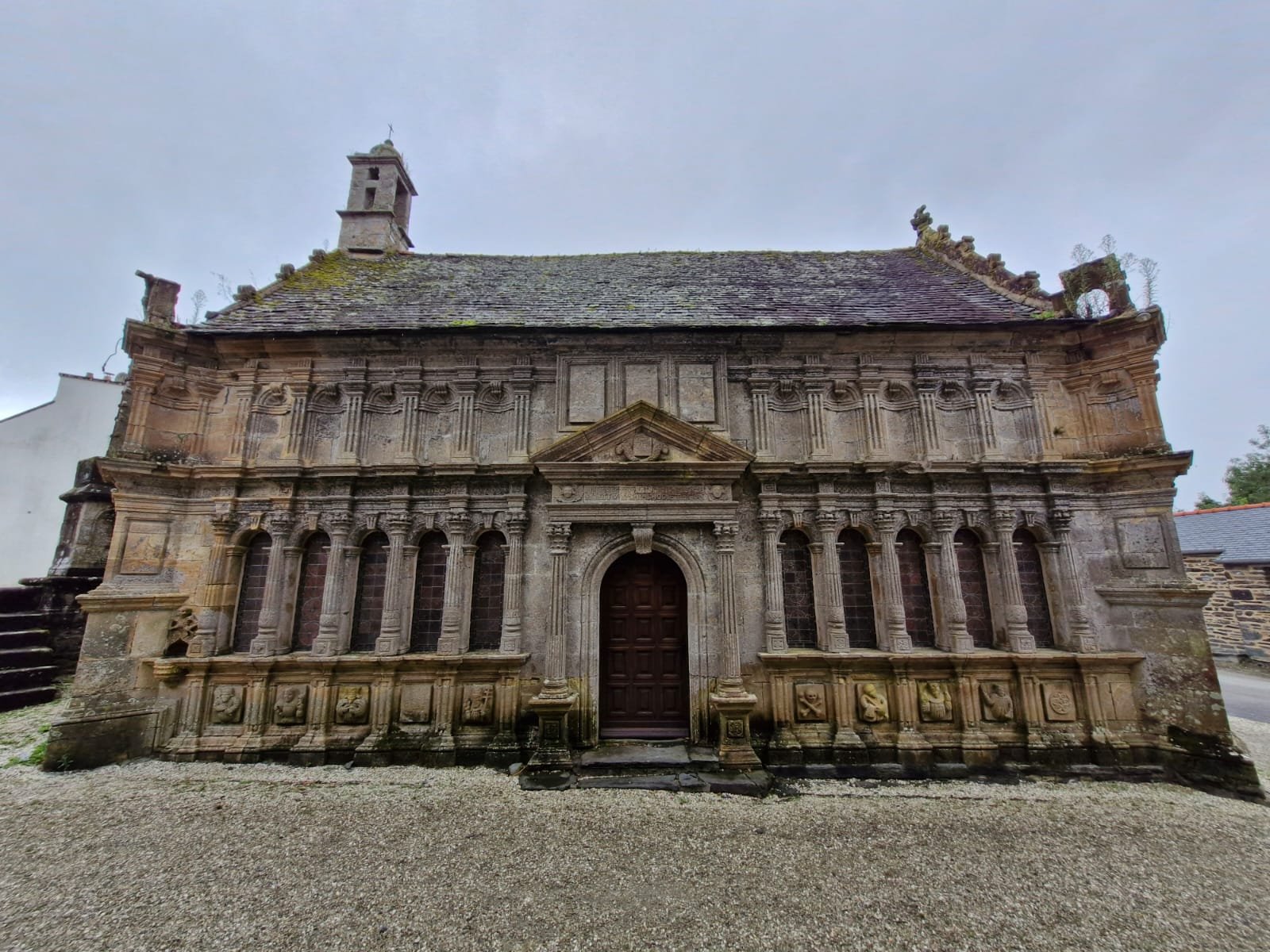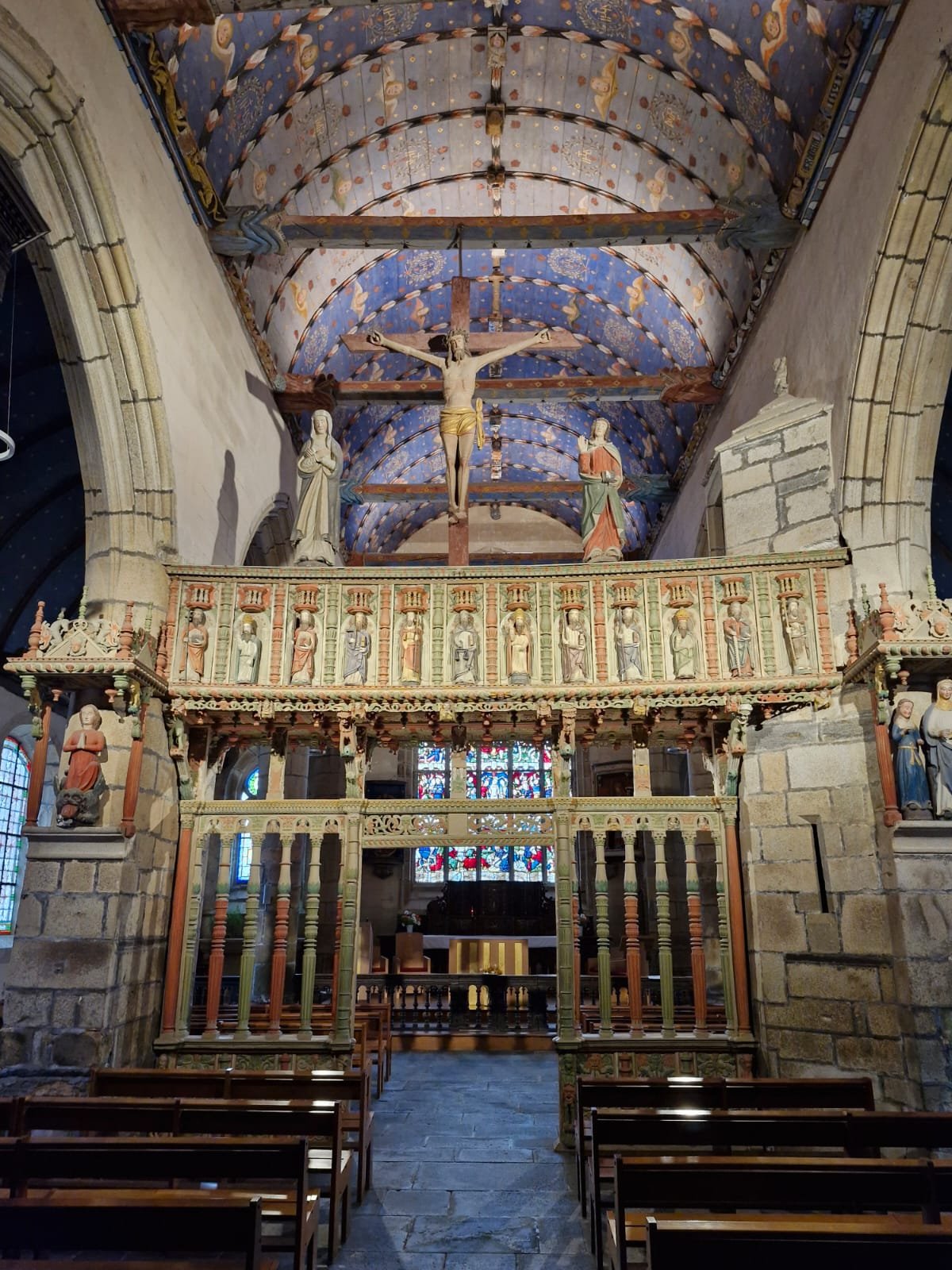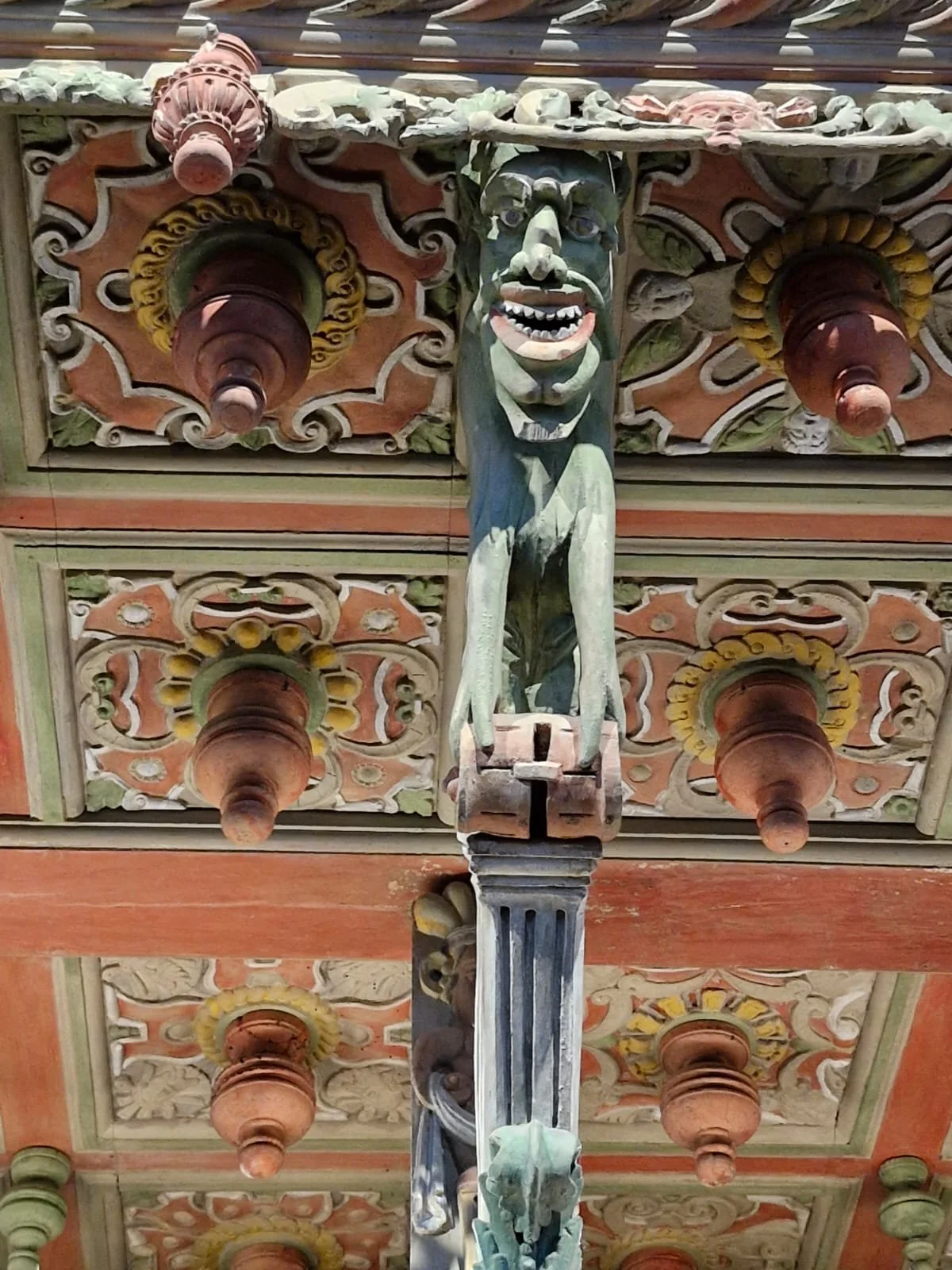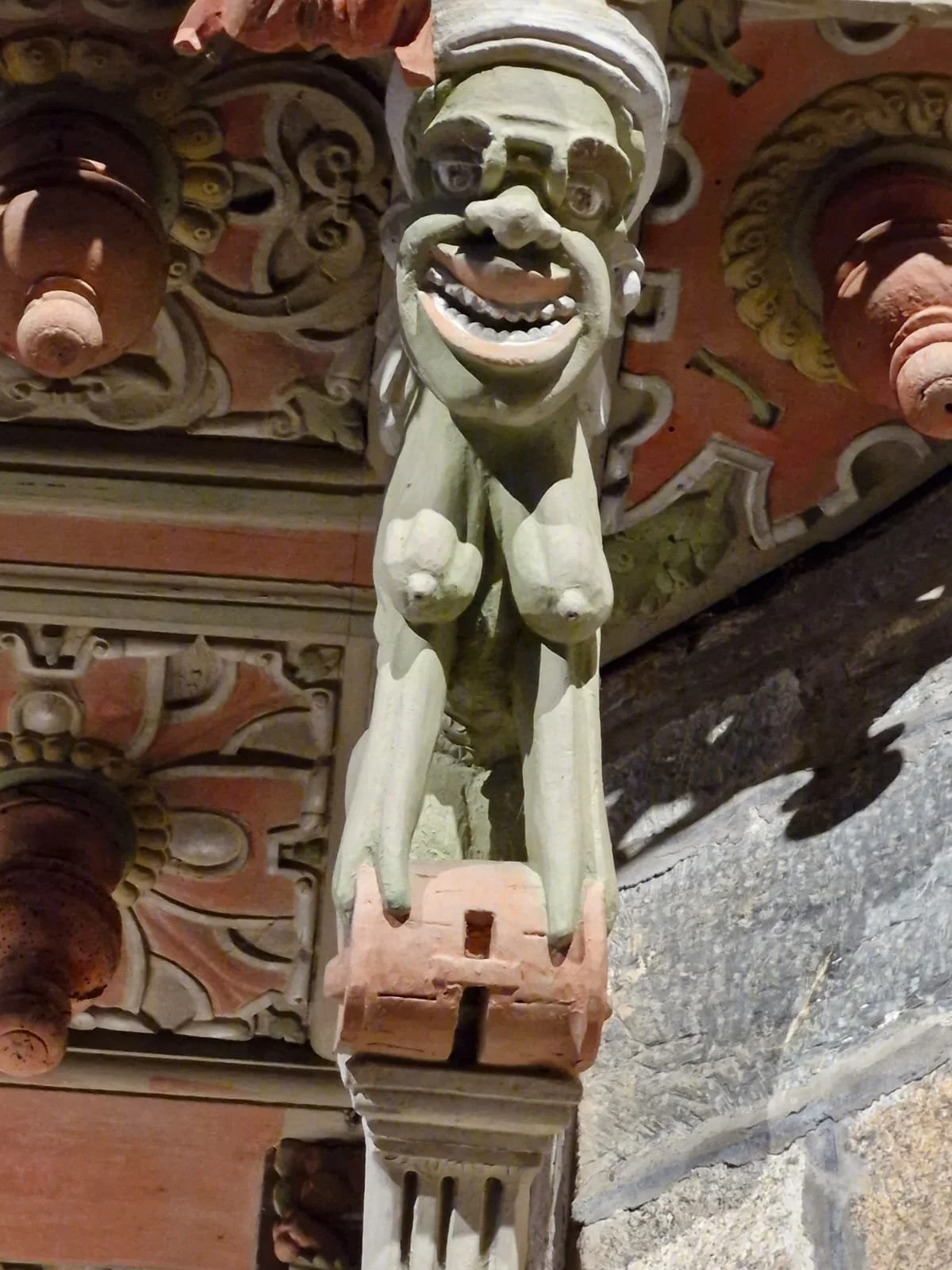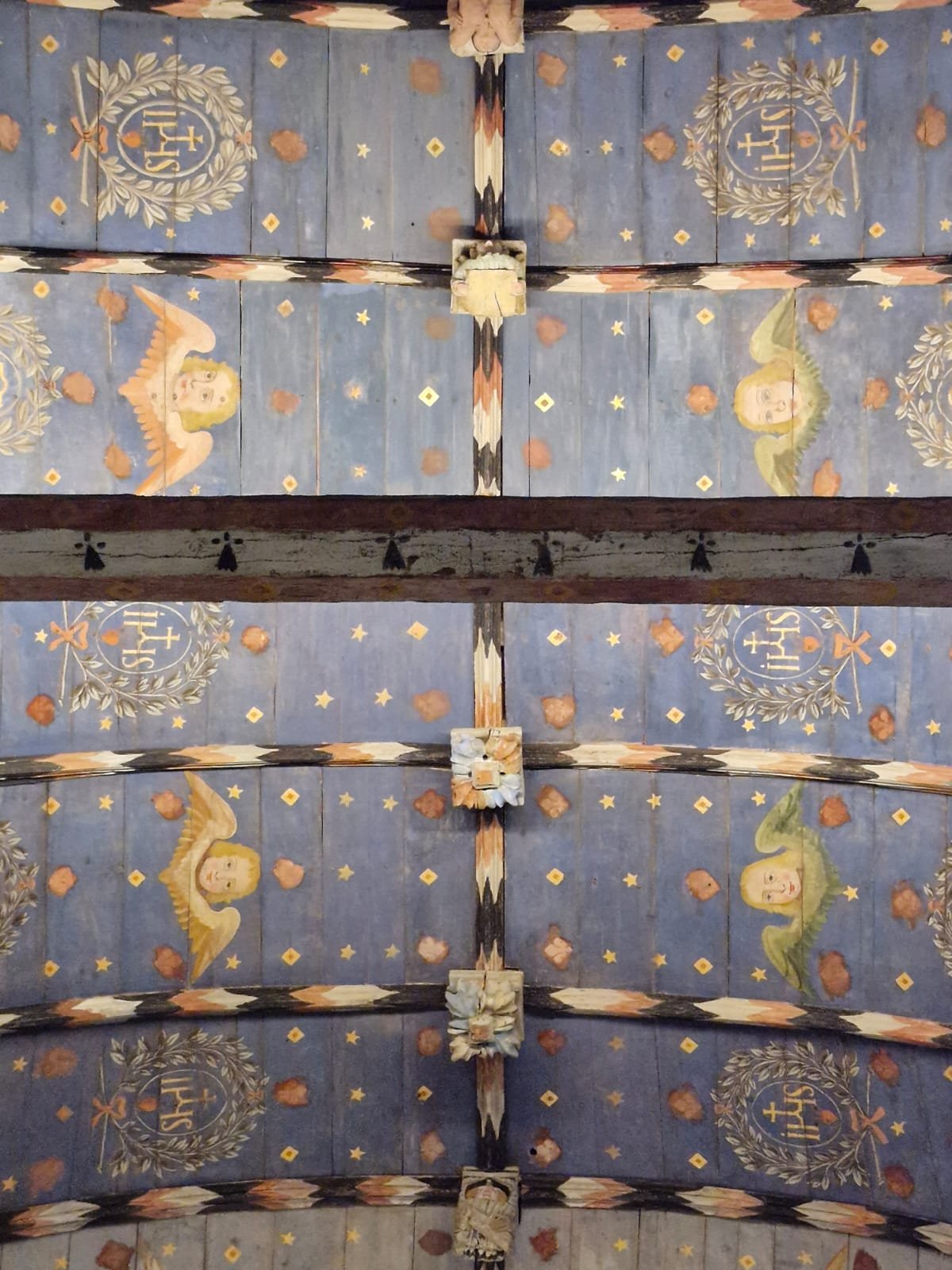Visiting the Enclos Paroissiaux of Brittany: La Roche-Maurice & the church of Saint-Yves
This is the first in a series exploring some of my favorite enclos paroissiaux—the enclosed parish churchyards unique to Brittany. These are not simply architectural sites. They are places where stone speaks, where history and belief are carved side by side, and where centuries-old traditions continue to shape the landscape and the people who live there.
We begin in La Roche-Maurice.
I’ve visited this village many times with my husband’s family, who are from the surrounding region. The close at the Église Saint-Yves immediately commands attention. A simple, massive entrance flanked by the three crosses of Golgotha tells you that the parish's wealth was focused on devotion. Carved above the south doorway is the unflinching reminder, “Memento: Homo: Quia: Pulvis: Es” — Remember, man, that you are dust (1640).
At the southeast corner, the Ankou—the Breton personification of death—holds out his spear and announces, I kill you all. It is not subtle, but it is deeply honest.
Saint Yves: The Patron of Brittany
Before we go any further, it's worth understanding the significance of Saint Yves. A lawyer and priest from the region in the 13th century, Saint Yves is a figure of immense importance to the Bretons. He is the patron saint of lawyers and the poor, revered for his fairness and integrity. The name "Yves" is so deeply woven into the fabric of this land that you find it everywhere—my father-in-law was a Jean-Yves, my brother-in-law is an Yves-Marie, and my husband’s aunt/godmother was named Yvette. The church of La Roche-Maurice is, of course, named for him, and as we will see, he is a central figure in the artwork here, a symbol of justice and piety.
The Ossuary: A Masterpiece of Breton Stonework
The ossuaire at La Roche-Maurice, dedicated to Sainte-Anne, was built between 1639 and 1640 and is among the most refined works of the atelier de l’Élorn. Every inch is deliberate, from the rhythmic regularity of its design to the detailed carvings. Panels depict people from every walk of life: a peasant, a woman with a bouquet, a jurist, a pope. In the center stands Saint Yves—the patron saint of justice—balancing between the rich and the poor.
The inscriptions continue the theme of mortality and reflection. One above the south door reads: “Memor: Esto: Iudicii: Mei: Sic: Erit: Et: Tuum: Mihi: Hodie: Tibi: Cras” — Remember my judgment; so will yours be. For me today; for you tomorrow. Even in death, these carvings express not fear, but clarity. The ossuary isn’t grim; it’s an invitation to live meaningfully.
Inside the Church: Renaissance in Full Color
The church of Saint-Yves, though austere from the outside, holds two major works of Breton religious art: the 1539 stained-glass Passion window, likely made in the Quimper workshop of Laurent Sodec, and a richly detailed 16th-century rood screen (jubé). Both are extraordinary.
The rood screen is carved from polychrome oak and is packed with visual language—fluted columns, masks, cornucopias, arabesques, and chimeras. The craftsmanship reflects a local knowledge of broader Renaissance trends, but it’s also distinctly Breton. Goats, unicorns, ribbons, and pinecones—symbols that meant something here—are tucked into every corner. The term “jubé” itself comes from the Latin phrase, “Jube, Domine, benedicere,” that the officiant would pronounce from this very gallery.
On the nave side, angels hold the Instruments of the Passion while apostles and popes stand in perspective-cut niches. On the choir side, saints walk in procession: Saint Michael slaying the devil, Saint Geneviève with her flickering candle, and Saint Pol Aurelian confronting his dragon.
The final element to note is the carved wooden ceiling. The beams are full of life, depicting people drinking cider, dancing to the biniou (Breton bagpipe), and plowing fields. However, this celebration of life ultimately gives way to a solemn funeral scene—a final, poignant reminder of the Ankou’s message.
What did the Ankou say again? I kill you all.
It sounds a bit dramatic, but somehow it fits. These places don’t shy away from the idea of death—they just acknowledge it, plainly and without fuss. And yet, they’re not somber. They’re full of detail, imagination, and unexpected warmth. You can feel the pride that went into every carving, every painted beam. There’s a real sense that these communities wanted to leave something behind—something that mattered.
La Roche-Maurice is just one of many. In the next post, I’ll take you to La Martyre and beyond—each site with its own atmosphere, its own voice, and its own way of telling the story of Brittany, one stone at a time.




